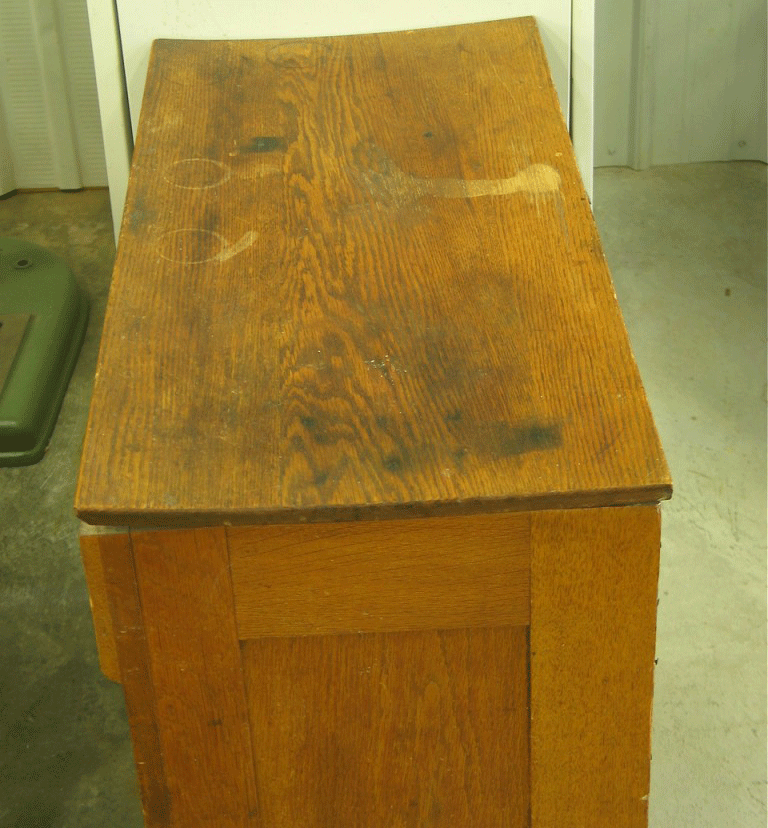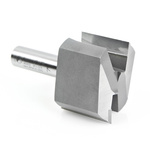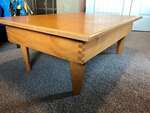We may receive a commission when you use our affiliate links. However, this does not impact our recommendations.
A persistent myth in the woodworking community is that you should finish both sides of wood, especially tabletops, to reduce the likelihood of warping. This myth has been carried to extremes to include the need to finish insides of chests-of-drawers, cabinets and drawers.
On the other hand, especially for the undersides of tabletops and the insides of drawers and cabinets, it’s often a good idea to apply a finish for looks, feel and ease of cleaning. But the finish does almost nothing to prevent warps. All your experience tells you this.
For example, finishing undersides or insides of furniture made before the 1920s was very rare. If tops from this early period have warped, they have always cupped on the topside. This is the opposite of what you would expect if you think the warp could have been caused by leaving the underside unfinished to shrink more as conditions in buildings have become increasingly drier. You would expect the topside to bow.

Plane sawn wood that hasn’t been dried adequately or has been moved to a drier climate can sometimes warp, adjusting to the drier atmosphere. But no finish, except possibly thickly applied epoxy resin, does any more to prevent this than slow the process a little. Moisture still gets through the finish.
Deck boards laid randomly and finished on the topside always cup, even though you would expect the boards to bow as the bottom side dries out and shrinks faster.
The true cause of warping, other than for wood that hasn’t been dried properly, is the topside or exposed side being wetted and dried out many
times causing “compression shrinkage.” The wood cells try to swell but can’t due to the wood’s thickness. So they compress to oval shapes and don’t resume their previous cylindrical shapes when they dry out.
The cells compress further and further every time they go through the swell/shrink cycle. The wood shrinks on that side, eventually cupping. If
the cycle is allowed to continue long enough, splits develop. You can see this clearly on wood decks, which go through the wet/dry cycle countless times.
On tabletops that are frequently wiped with a damp cloth, it’s necessary to keep the finish in good shape to prevent moisture from getting to the wood. This is the way to prevent warping.
Here are some supplies and tools we find essential in our everyday work around the shop. We may receive a commission from sales referred by our links; however, we have carefully selected these products for their usefulness and quality.










Well, I’ve not made 10 tables/week, not even close…but I’ve built my fair share of table tops. Unless required for aesthetics, I never finish both sides; and I have also not had any warp. The historical reference Bob made in the article is proof enough of his assertion.
sorry to digress but i’d like to comment on the “secret” family finish formula – equal part mineral/turpentine-varnish-BLO, 1/1/1 or 33% varnish. I finally read in one of your comments that you tweak the formula by decreasing the oil amount to get a glossier shine. Would I get the same effect by replacing what i’ve consumed of the finish with straight varnish? I don’t get to finish a project to often because I only have a limited amount of time to work on a project – the rest of life keeps interfering. what i mean is that if I make 6 oz of finish- 2/2/2 and use 3 oz. I that replace the 3 oz with 1 oz of varnish making the new mix 1/2/1 or 50% varnish. I keep on doing this with each coat also thinking that with each coat the absorption of oil is getting less and less. I store the mix in a sealed jar but notice that I have to decrease the standing time or else it drags too much and doesn’t wipe off well.
Your analysis is correct. But remember that I said that the difference in the gloss you get with the different proportions is not great.
This article is 100% misleading. Having made over 50,000 tables in the past 10 years and not having 1 table cup in 3 years I can tell you in no uncertain terms that unless you’re using a permeable finish, moisture will come and go 100% of the time and cup 100% of the time if you only finish one side. Even sanding one side differently than the other and leaving it unfinished for just 1 day will cup an entire table. Drying your wood will only take it to a certain m/c, so long as that wood is alive and has cells the m/c will always fluctuate and finish is the ONLY thing to prevent that flow of moisture. I can cup a table in 100 different ways, there’s only 1 way to keep it flat.
All finishes are permeable to some degree, except possibly thickly applied epoxy resin. Also, permeability is largely determined by the thickness of the finish. I would guess (educated) that if you asked wood technologist Gene Wengert, The Wood Doctor, about your warping problem, he would say the wood wasn’t dried to the proper moisture content.